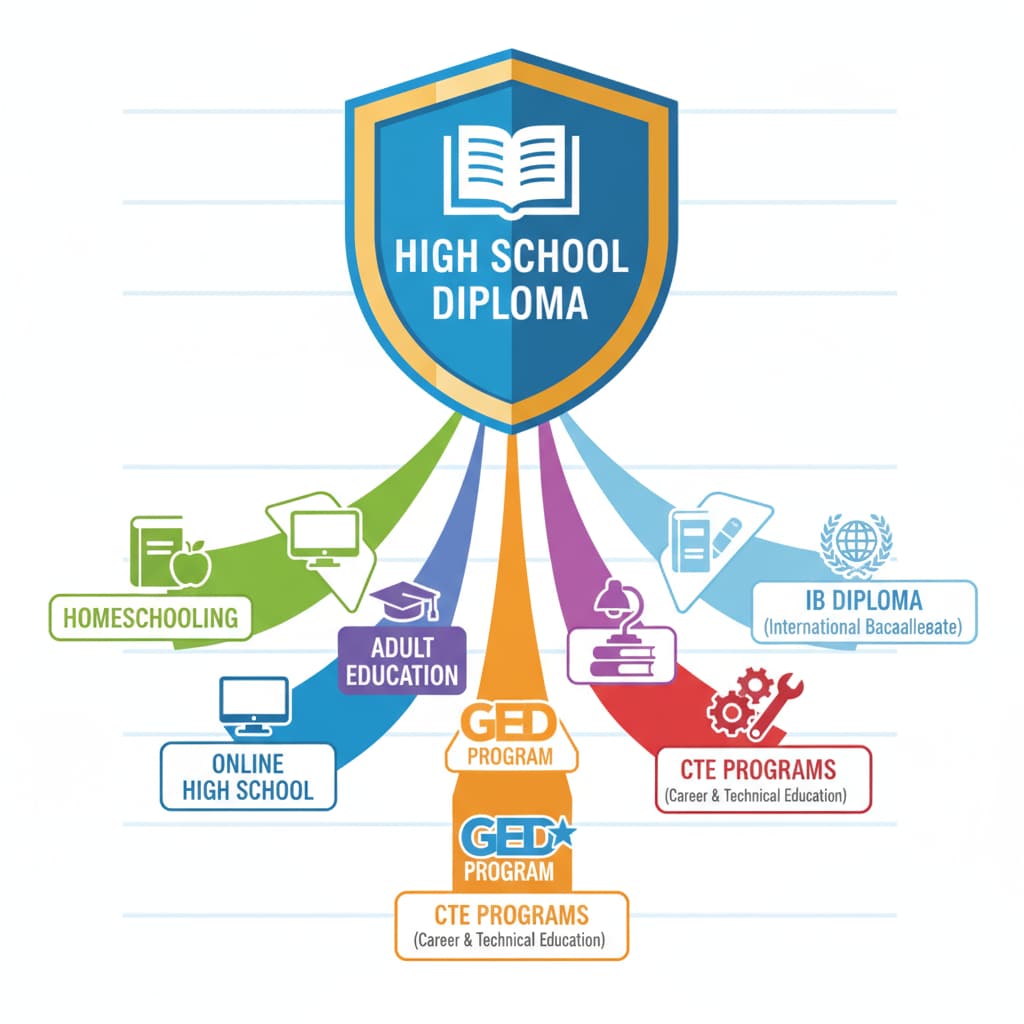When it comes to obtaining a high school diploma, the traditional route isn’t the only option. In fact, there are several alternative paths available, along with the well-known GED. This article will explore these alternatives and compare them to help you make the best educational decision for yourself or your child.

Understanding the GED
The General Educational Development (GED) test is a widely recognized alternative to a traditional high school diploma. It assesses skills in areas like language arts, mathematics, science, and social studies. Passing the GED exam demonstrates that you have the knowledge and skills equivalent to a high school graduate. According to GED official website, millions of people around the world have used the GED to further their education or enhance their career prospects.
Alternative 1: Adult Education Programs
Adult education programs are designed for individuals who have missed out on traditional high school education. These programs offer flexible schedules, allowing working adults or those with other commitments to earn their diploma. In addition, they often provide personalized instruction. For example, many adult education centers have small class sizes, enabling teachers to focus on each student’s needs. As a result, students can progress at their own pace. You can learn more about adult education programs on Wikipedia’s page on adult education.

Alternative 2: Online High Schools
Online high schools have become increasingly popular in recent years. They offer the convenience of studying from home at any time. Students can access courses, lectures, and assignments online. Moreover, online high schools often have a diverse range of courses to choose from. This gives students the opportunity to explore different interests. However, it requires a high level of self-discipline as students need to manage their own study time effectively.
Alternative 3: Homeschooling
Homeschooling allows parents or guardians to take control of their child’s education. It provides a customized learning experience tailored to the student’s specific needs and learning style. Parents can choose the curriculum and teaching methods that work best for their child. For instance, some families may focus more on hands-on learning experiences. But homeschooling also has its challenges, such as ensuring a well-rounded education and social interaction opportunities for the student.
Alternative 4: Career and Technical Education (CTE) Programs
CTE programs combine academic instruction with practical, career-oriented training. Students not only earn a high school diploma but also gain valuable skills in a specific trade or profession. These programs can lead to immediate employment opportunities after graduation. For example, a student in a CTE program for plumbing will learn both the theoretical knowledge and practical skills needed in the plumbing industry. You can find more information about CTE programs on Britannica’s page on CTE.
Alternative 5: International Baccalaureate (IB) Diploma
The IB Diploma is an internationally recognized qualification. It emphasizes critical thinking, creativity, and a global perspective. Students who pursue the IB Diploma take courses in multiple subject areas and are required to complete an extended essay and participate in community service. This program is highly regarded by colleges and universities around the world, opening doors to prestigious institutions.
Readability guidance: By exploring these alternative paths to a high school diploma, you can see that there are many options beyond the traditional route and the GED. Each alternative has its own advantages and considerations. Whether you’re looking for flexibility, a specific career focus, or a globally recognized qualification, there’s an option that might suit you. Make sure to research each option thoroughly and consider your own goals and circumstances before making a decision.


